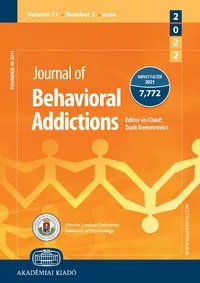Longitudinal association between parental involvement and internet gaming disorder among Chinese adolescents: Consideration of future consequences as a mediator and peer victimization as a moderator
Longitudinal association between parental involvement and internet gaming disorder among Chinese adolescents: Consideration of future consequences as a mediator and peer victimization as a moderator
Author(s): Kai Dou, Xue-Ke Feng, Lin-Xin Wang, Jian-Bin LiSubject(s): Behaviorism
Published by: Akadémiai Kiadó
Keywords: gaming disorder; parenting; peer relationships; future time perspective; ecological system theory; youth
Summary/Abstract: Background and aims. Internet gaming disorder (IGD) in adolescents is a concerning issue. Positive parenting has been found to protect against adolescent IGD, but the underlying mechanisms await further investigation. As such, this study examined the longitudinal association between parental involvement (PI) – a specific type of positive parenting understudied in the literature of adolescent gaming disorder – and IGD. Moreover, this study also tested consideration of future consequences (CFC) as a mediator and peer victimization (PV) as a moderator. Methods, A two-wave longitudinal research spanning 6 months apart was conducted. Participants were Chinese adolescents (final N = 434; 222 females; M age = 14.44 years, SD = 1.56). They provided ratings on PI, PV, and IGD at Wave 1, and CFC-immediate, CFC-future, and IGD at Wave 2. Results. Descriptive statistics showed that the prevalence rate of IGD was 10.81% and 9.45% at Waves 1 and 2, respectively. Moreover, results of moderated mediation model found that after controlling for Wave 1 IGD and covariates, Wave 1 PI was associated with Wave 2 IGD via preventing adolescents who had higher levels of PV from developing a tendence of CFC-immediate and via promoting adolescents who had lower levels of PV to develop a tendence of CFC-future. Discussion and Conclusions. Altogether, these results suggest that facilitative ecological systems (e.g., positive parenting and good relationships with peers) and personal strengths (e.g., positive future orientation) jointly contribute to the mitigation of adolescent IGD.
Journal: Journal of Behavioral Addictions
- Issue Year: 11/2022
- Issue No: 3
- Page Range: 820-830
- Page Count: 11
- Language: English

